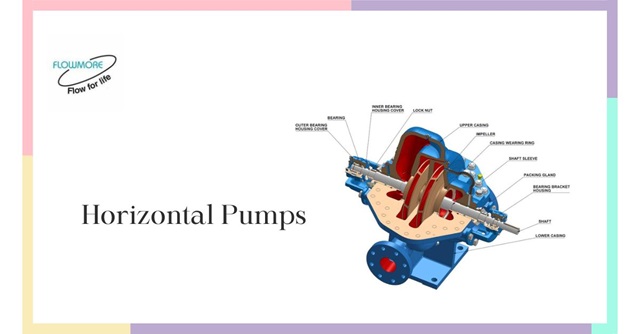If you want a specially designed system that works on the
principle of rotary movements to move fluid from one location to another you
can use Horizontal Pumps. Usually, it creates force with its movement to
move the liquid.
If you want to know more about them continue reading.
Through this article, you will learn about their working principle and other
characteristics of their different models, helping you to choose the right one
according to your needs.
The Working Principle of Horizontal Pumps
The Horizontal Pumps typically
have a fluid-dynamic design. This special design needs the system to be primed
first to work. This means that you will need to fill the system with liquid for
it to operate.
This addition of fluid is necessary to initiate the
impeller and accelerate it to ensure that the fluid flows outward from the
diffuser radially.
While generating energy for its operation, these pumps
typically work in two specific phases. In the first phase, the energy is
transferred to the fluid that is to be moved by using velocity to produce
kinetic energy.
In the second phase, the kinetic energy is changed to pressure
energy.
Diverse Range of Applications
The Horizontal Pumps have a diverse range of
applications. You will find it being used in:
·
Irrigation
sectors
·
Fire-fighting
systems
·
Mine
drainage
·
Artificial
snowmaking
·
Pumping
stations
·
Washing
and
·
Pressurization
installations.
The Different Elements
There are different elements that make a horizontal pump.
These are:
·
The
housing to hold the other components of the pump
·
The
inlet valves
·
A
screen to protect the inlet valve from impurities
·
Impellers
having blades
·
A
safety valve to protect the system from water hammering
·
An
automatic valve and
·
A pressure
gauge.
Characteristics and Abilities
The specific characteristics of the Horizontal Pumps make
them useful for handling different types of fluids like water with high
viscosity values.
Also Read:- The Benefits of Horizontal Pumps
However, it may not work properly if there is air or solids
in the fluid or if the fluid does not tend to move even when the rotation speed
is high.
The main components of a horizontal pump are the volute and
the impeller.
The job of the volute is to collect and transform the continual
flow into a physical process to ensure a stable supply of energy. On the other
hand, the impeller rotates in a circular motion.
The Benefits
The benefits offered by the Horizontal Pumps. For
example, these allow the use of turbines and motors as rotation machinery due
to the large number of revolutions of the shaft.
The simple design and construction of these pumps make them
easy to use and increase and decrease power. These are cost-effective and
reliable solutions for an automatic control system allowing drawing fluid to
greater heights.
Conclusion
These pumps usually have a diverse range of applications,
including building construction, industrial processes, and agriculture. It is
the special design, different features, shapes, and sizes that make these
machines useful for different purposes. These machines are pretty easy to use
and are quite indispensable.

Comments
Post a Comment